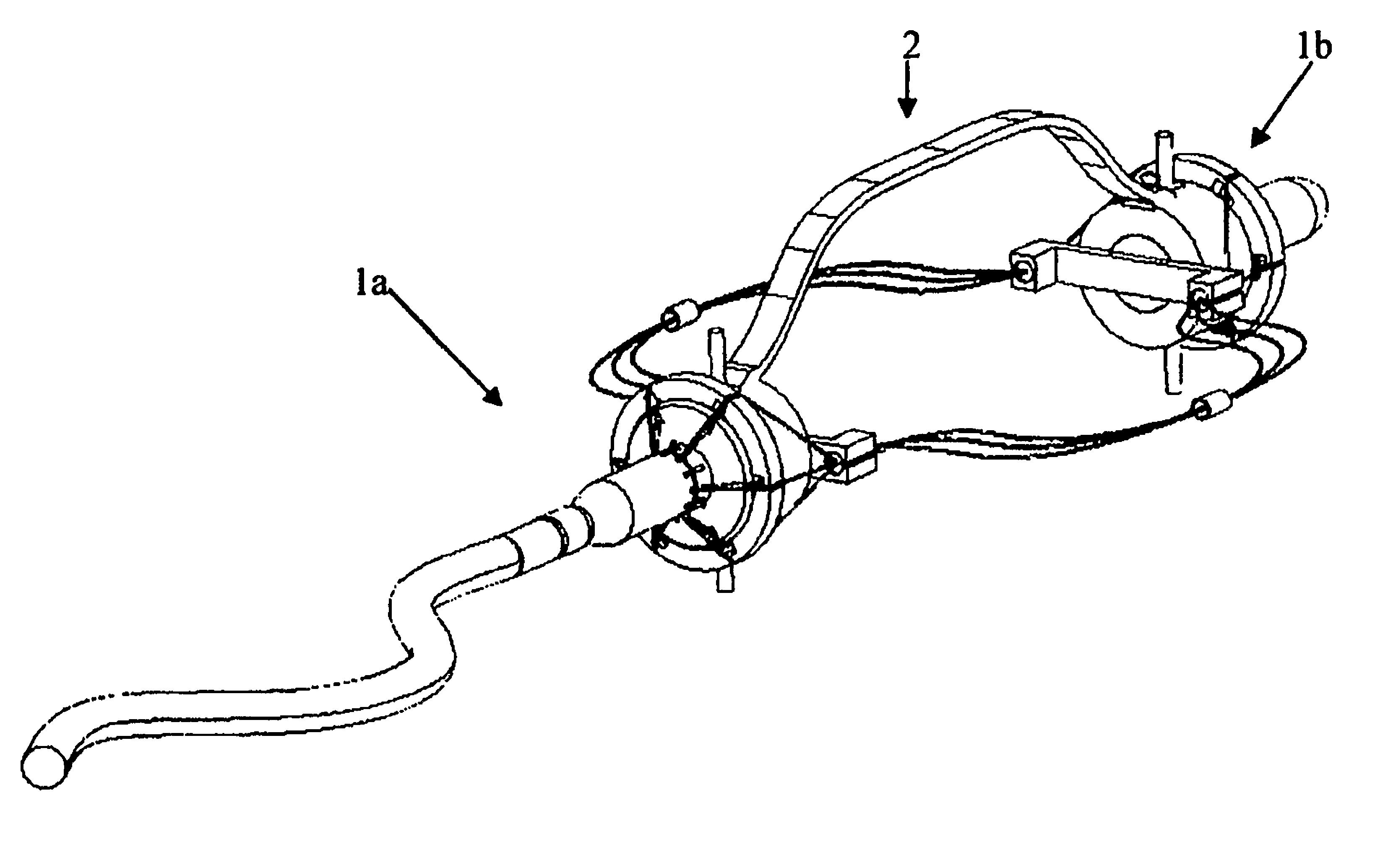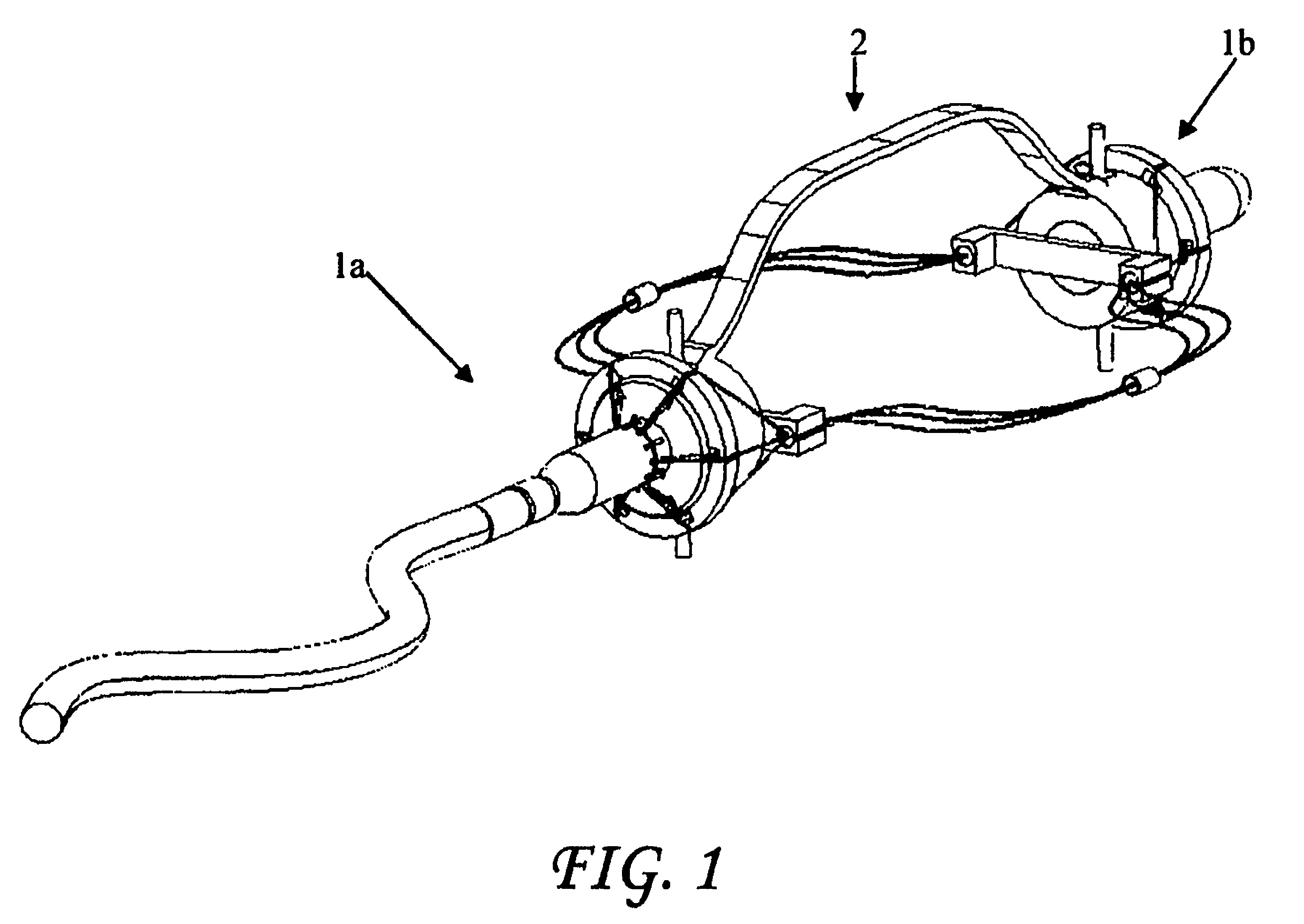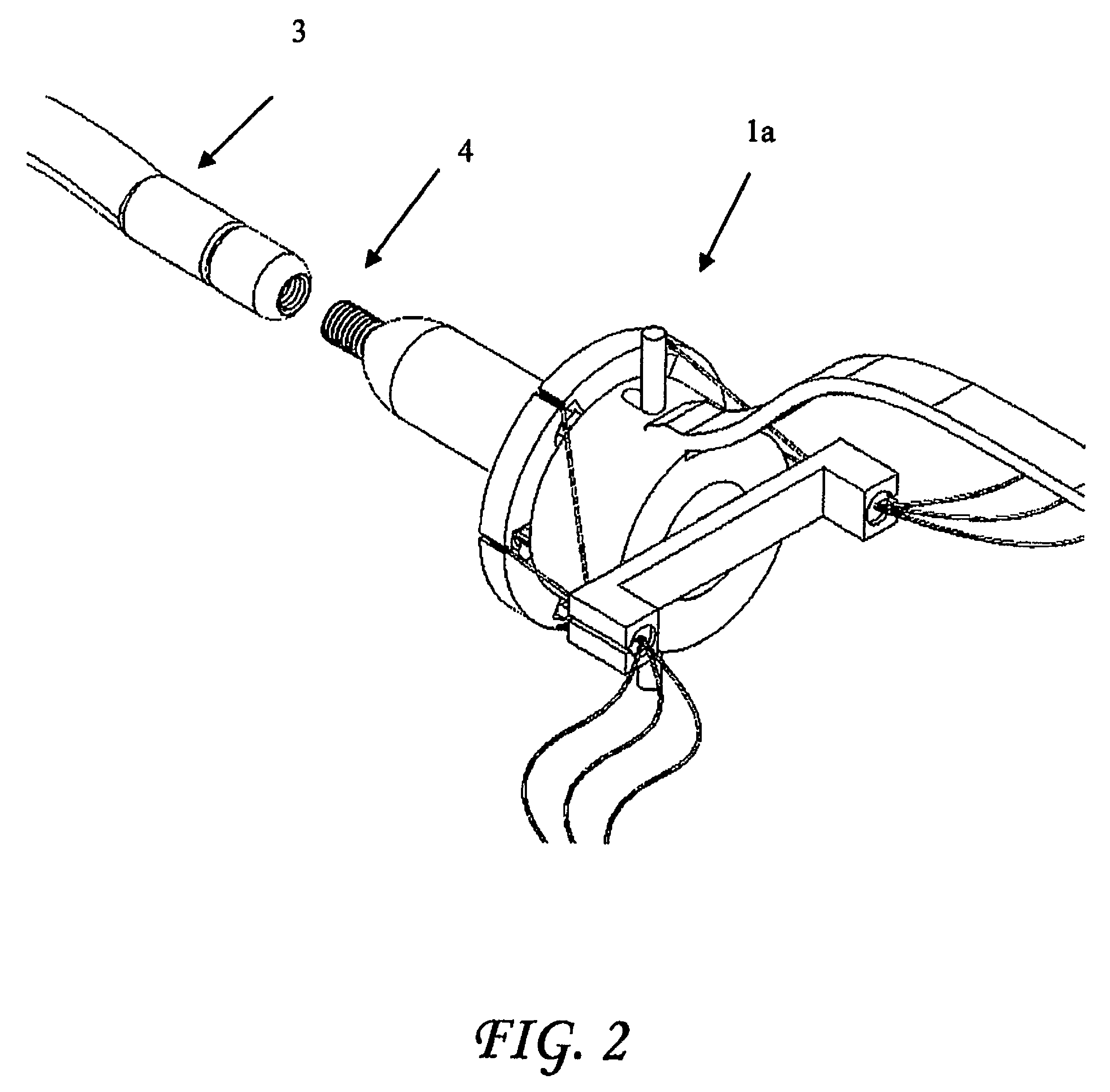Assisted apparatus for anastomosis and method thereby of reconnecting the urethra to the bladder after removal of the prostate during a prostatectomy
a technology of assisted apparatus and urethra, which is applied in the field of reconnection of the urethra and the bladder after the removal of the prostate during a prostatectomy, can solve the problems of affecting the operation, the surgeon's work at a difficult angle, and the urethral stump being particularly difficult to attach to the bladder neck,
- Summary
- Abstract
- Description
- Claims
- Application Information
AI Technical Summary
Benefits of technology
Problems solved by technology
Method used
Image
Examples
Embodiment Construction
[0033]The following description is provided, alongside all chapters of the present invention, so as to enable any person skilled in the art to make use of said invention and sets forth the best modes contemplated by the inventor of carrying out this invention. Various modifications, however, will remain apparent to those skilled in the art, since the generic principles of the present invention have been defined specifically to provide an apparatus for reconnecting the urethral stump to the neck of the bladder after removal of the prostate during a prostatectomy and method of performing urethral-vesicle anastomosis thereby.
[0034]The term piercing refers hereinafter in a non limiting manner to a needle deployment motion through body tissue walls.
[0035]It is according to one embodiment of the present invention to teach a method of performing a urethral-vesicle anastomosis inter alia comprising steps being defined below: A guiding catheter or sound is introduced into the urethra from th...
PUM
 Login to View More
Login to View More Abstract
Description
Claims
Application Information
 Login to View More
Login to View More - R&D
- Intellectual Property
- Life Sciences
- Materials
- Tech Scout
- Unparalleled Data Quality
- Higher Quality Content
- 60% Fewer Hallucinations
Browse by: Latest US Patents, China's latest patents, Technical Efficacy Thesaurus, Application Domain, Technology Topic, Popular Technical Reports.
© 2025 PatSnap. All rights reserved.Legal|Privacy policy|Modern Slavery Act Transparency Statement|Sitemap|About US| Contact US: help@patsnap.com



